foot in mouth: November 2009 Archives
I ask on the occasion of Wally Cardona's Really Real at BAM through tonight, which does what you're always hoping for in a work--develop its ideas via its structure. Here, he's exploring individuation, isolation, or "falling free," as Kierkegaard, Really Real's reigning philosopher, puts it. Cardona divides each thing from each thing, including us from an emotional investment in the work.
I didn't mind my own diffidence--it seemed just fine--but I did wonder whether it was really necessary that the words and dance theater remain at such a remove, like two parallel universes. (Same question for Bill T. Jones's Serenade/The Proposition, review excerpted below, where the distance it's crossing is time.) That stance is as old as postmodernism--and I think we need an alternative. (Annie-B Parson and Paul Lazar's Big Dance Theater offer an excellent if elusive one. Will elaborate some day.)
Here's a chunk of my Financial Times review of the Cardona:
Choreographers are mostly too naive or too knowing to be strange. They either mistake their commonplaces for the unusual or flaunt their originality until it feels like a pose. Weirdo Wally Cardona, however, is fierce enough in his preoccupations not to care whether anyone shares them and yet aware enough of dance history not to repeat it. Juxtaposing Kierkegaard, compellingly disjointed dancing and the sweet voice of youth in his second BAM commission, the New York choreographer baffles and endears.
Dance may be a synthetic art - steps, music and lighting blending together for a single effect - but Really Real puts a premium on autonomy. The 80-minute piece begins with a teenager on tape stumbling through passages from a Kierkegaard biography. She is what she is, and the philosopher is something else: an obstacle to be overcome. Meanwhile, civilians in street clothes wander on to the beautifully dilapidated stage to sit or stand as Cardona moves among them, never touching a soul, his arms like the Tin Woodman's, his hips like a snake.
If anything had the power to override the boundaries here, it would be the oratorio by Phil Kline (composer of the Unsilent Night boom-box symphony) for the Brooklyn Youth Chorus. Beginning low and sweet, the harmonies slowly accumulate into an oceanic wave of innocence . But the angelic voices, emanating from the balcony behind us, are too far away to wash over the stage. In lyrics adapted from Kierkegaard, the children sing: "To transform all this distance into one normal step into life is the single miracle." Indeed.
In further divisions, Cardona separates the dances into.....
For the whole shabang, click here.
Photo above by Julieta Cervantes. Pictured: Stuart Singer, Omagbitse Omagbeni and Joanna Kotze.
And here is a chunk of the Bill T. Jones review for the Financial Times of one of his two Lincoln works presently touring the country:
"Four score and seven years ago," Abraham Lincoln famously reminded an audience faced with a vast number of soldiers to bury, "our fathers brought forth on this continent a new nation conceived in liberty and dedicated to the proposition that all men are created equal." Bill T. Jones's Serenade/The Proposition is almost as dedicated to the notion that all texts are created equal. The otherwise glorious piece - one of his two works touring the US that take up Lincoln's legacy - nearly sinks under this article of postmodern faith.
Photo by Paul B. Goode
The choreographer has set himself an arduous task: how to turn an influence into theatre. He opts for a maximalist, egalitarian approach. Along with images and a mishmash of music, a collage of recited and sung texts, live and on tape, juxtaposes history and the present, the battlefield and the podium, while 10 dancers perform strictly non-illustrative moves.
But the texts won't co-operate. The identity issues that the dancers air at a company blab session sound fatuous beside a blazing Lincoln and Oliver Wendell Holmes. "The Battle Hymn of the Republic" knocks flat Jones's own homilies on history.
Meanwhile, though, there is the dancing. Not so special solo, in ensemble the handsome dancers give expression to the twin principles Lincoln laboured under: a slave's freedom depends on his being admitted to humanity and to a republic that, Lincoln explained, throws off "the arguments that kings have made: you work and I eat, you toil and I will enjoy the fruits of it".
Jones combines a loose, ribbony style with inventive, all-over partnering, and the result is...
For the rest, click here.
Frederick Wiseman's La Danse: The Paris Opera Ballet--soon it will be all up and down the West Coast and in select cities in other parts of the country. Its stay at the Film Forum here in New York has been extended for at least another two weeks.
Agnès Letestu and Mathieu Ganio rehearse Genus, choreographed by Wayne McGregor. Photo courtesy of Zipporah Films and Film Forum.
Here is a chunk of my tiny Financial Times review, in which I fail to mention that the movie is long--not as long as some of Wiseman's flics but longer than most documentaries--about 2.5 hours--and it has a lapidary, reverential rhythm. Lots of shots of the building, which made me wonder whether the Paris Opera kept a relatively tight rein on what rehearsals Wiseman was allowed to watch or whether the participants were too aware of being filmed to meet his naturalistic needs. Anyway...here's what I did say:
Throughout High School, Domestic Violence and dozens of other patient, plainspoken portraits of institutions and the people who constitute them, American documentarian Frederick Wiseman adheres to cinéma vérité's strictest principles, eliminating the captions, voiceovers and quick cuts that function like a "proscenium arch in the theatre", he has pointed out.For the whole shabang, here.But what about when his subject is theatre? In La Danse: The Paris Opera Ballet (which, as well as its run at Film Forum, will also be shown in selected theatres across the US, Australia and the UK), Wiseman trains his lens on inveterate performers--dancers turned rehearsal coaches and administrators--who erect proscenium arches wherever possible, to absurd, dizzying and poignant effect.
Rehearsing a dancer in Angelin Preljocaj's Medea's Dream in one of the studios under the Palais Garnier's gilded roof - its round windows admitting Paris's white, abstract light - the exaggeratedly polite former étoile Laurent Hilaire translates a tiny gesture as "tragedy, destiny, life". Then he quotes Cocteau. How grand! How French! And his remark "Your arms are in place, but only your feet are at work" possesses such prosodic equipoise that it takes a moment to realise it's an insult. "Sometimes, you don't know where you are," another rehearsal coach tells a hardworking dancer. Sometimes neither do we.
Most masked and disorienting is Brigitte Lefevre, the company's artistic director for the past 14 years - eons in byzantinely political Paris Opera time. You can measure this smooth operator's power by how much she talks. She meets her ballet masters to discuss young dancers' recalcitrance towards contemporary technique - a fiasco if the works here, by European dance-theatre mavens Mats Ek, Sasha Waltz, Pina Bausch and Preljocaj as well as the futuristic Brit Wayne McGregor, are any measure. She checks in with a hopeful novice. She introduces a choreographer to a maze of protocol. And always she talks for and over everyone else. When she's done, you have no idea who's left standing.
Meanwhile, the dancers, like ballet dancers everywhere, mainly keep silent.....
Treat yourself, if you're so lucky: you only have till Saturday, and Wednesday, the house was packed.
Some critics have been ambivalent--Gia Kourlas in the NY Times and Kathleen O'Connor at Danceviewtimes. I was enthralled, and set free for flashes of insight, from blast off to lights out.
O'Connor is a brilliant choreographer, but his Mommy and Baby dances (2006 and 2004, respectively) bothered me for all sorts of reasons, including their dourness and archness, their telling me things that made me think wearily, as if I were having the same old argument with the same tortured loved one, "I know, I know. But can we please, please talk about something else?" And I didn't catch last year's Rammed Earth, which perhaps belongs in spirit and method more to Wrought Iron Fog than to the previous work.
It hasn't been since 2002's Winter Belly (scroll about half way down) that I've felt this enlivened, excited, blessed etc. etc. etc. by an O'Connor dance.
Presenters: Jump on this dance. Your audiences will thank you.
Anyway, here's a bit of my Financial Times review:
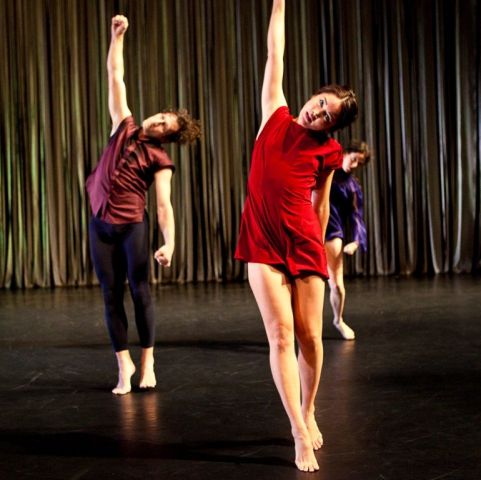
From left, Daniel Clifton, Erin Gerken, and Heather Olson. Photo: Yi-Chun Wu for DTW.
A spirit of experimentation regularly drives Tere O'Connor's dances, but the abundance of invention in Wrought Iron Fog (running until Saturday) beggars the imagination - and feeds it.
The New York choreographer's dancers occupy a private sphere of play animated by mechanical compulsion and voluptuous whimsy. Matthew Rogers makes a steeple of his hands, throws back his head and twirls on his toes like a playground swing's unwinding chain. He does it again - for fun. Erin Gerken shapes her arms into a half-square, as if measuring a plot of air.
Soon others join her. In O'Connor's world, whimsy and compulsion are infectious. You catch them like the common cold - by being close by.
The hour-long work proceeds with the same serendipitous flow as a Cunningham dance. But where the late choreographer emulated the easy coincidences of pedestrian traffic and the instinctive herds and migrations of animals, O'Connor takes his cue from human consciousness - and unconsciousness. Watching Cunningham dancers, you don't think about the inner life; with Gerken, Rogers, Hilary Clark, Daniel Clifton and the mesmerisingly innocent Heather Olson, you can't stop thinking about it. These dancers are bursting at the seams with hapless interiority. Their worldly movement excites perplexity, remoteness, lust and glee in them; they are what you call characters.
For several years before Wrought Iron Fog, the characters were more neurotic than playful. The dances seemed bitter about.....
For the whole thing, click.
Next week: A few thoughts to accompany my review of Bill T. Jones's Lincoln project.
Karole Armitage is a choreographer who misses more than she hits, but even that bumpy track record didn't prepare me for Itutu, playing BAM for a mercifully short run this week.
Here are the first few paragraphs of my Financial Times review, out tomorrow:
If cultural appropriation didn't already have a bad name, Karole Armitage's Itutu (until Saturday) would give it one. That the choreographer doesn't notice that her troupe mixes with the charming and engrossing experimental Afropop band Burkina Electric like oil with water would be dumb enough. But to use the Burkinabè band members as props for her preening dancers is something else again. Has the lady not heard of colonialism?At the start, Itutu diminishes the Africans only a little. Electric guitarist Wende K. Blass and singer-enchantress Maï Lingani flirt with a couple of dancers while strumming and singing, as if these antics and their music were on a par. The sound's overamplification buries the guitar's lilting melodies, but Armitage has a point to make: this isn't your average ballet.
Soon her slick crew is copying the moves of the band's own dancers, Vicky and Zoko Zoko, and depriving the steps of sense. When Zoko Zoko undulates from side to side, it's as if an electric wire were running through him. Burkina Electric includes dancers in its mix not to prove its choreographic mettle but to show us musical possession in the flesh. Armitage doesn't care. When she borrows, she takes without transforming or honouring.
Megumi Eda and Zoko Zoko
The disrespect culminates in a duet between Megumi Eda, the choreographer's favourite and most self-regarding performer, and the burly Zoko Zoko in which he serves as ballet barre, providing Eda with the leverage to power her leg overhead (for the millionth time). That Lingani can bring some gravity and humanity to Itutu, looking upon the dancers buzzing around her with the magnanimity and delight of a strict vegetarian towards flies, is a testament to the singer's star power.
Without the band....
For the whole thing, click here.
Your time would be much better spent at the Joyce this weekend, watching and listening to a Taiwanese troupe that specializes in bringing ancient dance and music forms to life. Here, some of the Financial Times review published today:
About a millennium ago in China, as the Song Dynasty was swallowing up the Tang, the statesman Han Xizai realised his political career was over and retreated to his mansion for a life of debauchery. When word spread of nights where "guests mixed with ladies, shouting in wild excitement", as one chronicler put it, Emperor Li Yu sent the court painter Gu Hongzhong to gather intelligence. Voilà "The Feast of Han Xizai", a painting with enough intrigue and side plots to make Gu Imperial China's demimondaine answer to Bruegel. Now hanging in the Beijing Palace Museum, the delectable 11-foot scroll has spawned imitations and tributes down the centuries.The latest is a dreamily slow, meticulously constructed dramatisation by the Taiwanese music and dance troupe Han Tang Yuefu (at the Joyce until Sunday as part of Carnegie Hall's bicoastal festival Ancient Paths, Modern Voices). Like the painting, the dance forgoes the "shouting" for ladies singing, dancing, fluting and plucking the lute, and men drumming, flirting and, mainly, watching. Unlike the painting, no beds with rumpled sheets frame the circumspect action to hint at where it all is leading or has led. Nor do several mini-dramas transpire at once, in that loose, improvisatory rhythm of a promiscuous night that will inevitably bleed into morning. Rather, Han Tang turns "The Feast" into an extended ritual, with one part discretely following another.
The stagey approach damps the mood of possibility but doesn't destroy it. And it has little impact on what would always have been formal, such as the musical numbers. Mix the stir-and-beat rhythms of an ancient raga with the dissonance of Beijing opera, and you come close to the captivating idiom of the ancient Nanguan music that the lady flautists and lutenists play, each with her own kind, and the singers sing. Music is the show's star.
But Han Xizai's consorts - particularly the head concubine (Ho-wen Hsiao, pictured above) - aren't far behind. Above tiny, gliding steps, their heads bob like a marionette's: they seem always to be yielding.....
AJ Blogs
AJBlogCentral | rssculture
Terry Teachout on the arts in New York City
Andrew Taylor on the business of arts & culture
rock culture approximately
Laura Collins-Hughes on arts, culture and coverage
Richard Kessler on arts education
Douglas McLennan's blog
Dalouge Smith advocates for the Arts
Art from the American Outback
Chloe Veltman on how culture will save the world
For immediate release: the arts are marketable
No genre is the new genre
David Jays on theatre and dance
Paul Levy measures the Angles
Judith H. Dobrzynski on Culture
John Rockwell on the arts
innovations and impediments in not-for-profit arts
Jan Herman - arts, media & culture with 'tude
dance
Apollinaire Scherr talks about dance
Tobi Tobias on dance et al...
jazz
Howard Mandel's freelance Urban Improvisation
Focus on New Orleans. Jazz and Other Sounds
Doug Ramsey on Jazz and other matters...
media
Jeff Weinstein's Cultural Mixology
Martha Bayles on Film...
classical music
Fresh ideas on building arts communities
Greg Sandow performs a book-in-progress
Harvey Sachs on music, and various digressions
Bruce Brubaker on all things Piano
Kyle Gann on music after the fact
Greg Sandow on the future of Classical Music
Norman Lebrecht on Shifting Sound Worlds
Joe Horowitz on music
publishing
Jerome Weeks on Books
Scott McLemee on books, ideas & trash-culture ephemera
theatre
Wendy Rosenfield: covering drama, onstage and off
visual
Public Art, Public Space
Regina Hackett takes her Art To Go
John Perreault's art diary
Lee Rosenbaum's Cultural Commentary
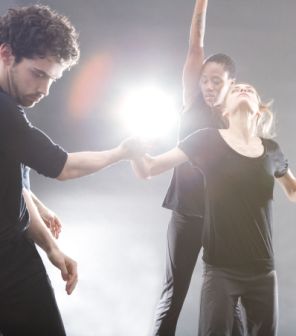
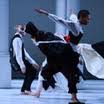
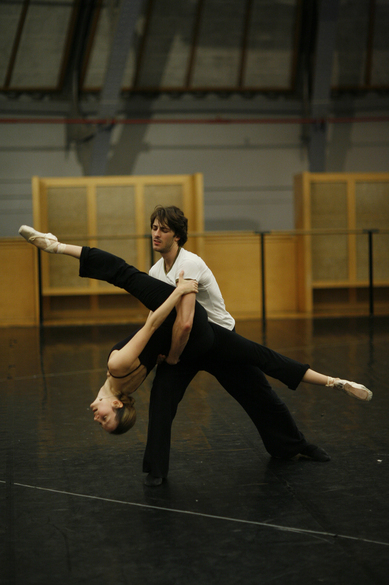
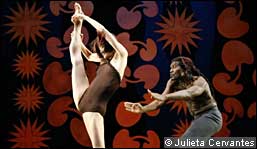
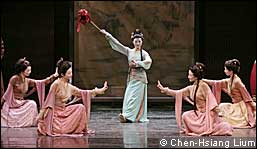

Recent Comments